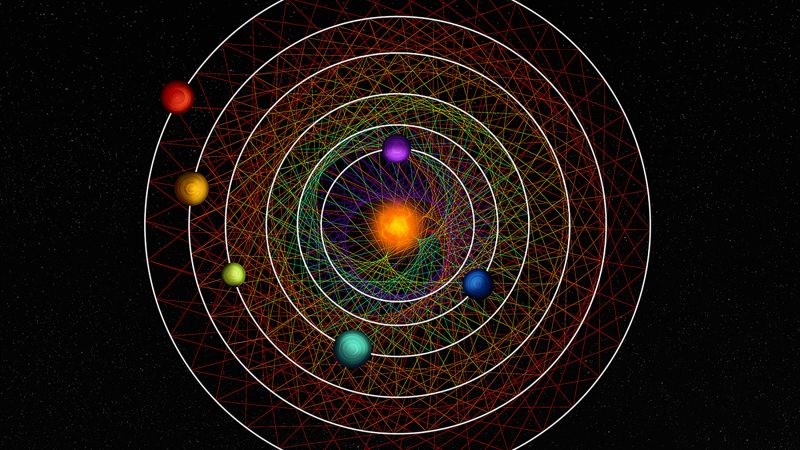Astronomers have unlocked a cosmic mystery by discovering a rare family of six planets orbiting a star called HD110067. These sunlike planets are located about 100 light-years from Earth in the Coma Berenices constellation. The planets, which are larger than Earth but smaller than Neptune, create a geometric pattern due to their rhythmic orbital resonance.
In a celestial dance, known as orbital resonance, these six exoplanets, labeled b through g, exert gravitational forces on one another, creating a harmonic rhythm as they complete their orbits. These unusual findings heavily contribute to our understanding of planet formation, and scientists believe that these planets, which have maintained their initial rhythmic orbits for over 1 billion years, could help uncover secrets of planet evolution and the origin of sub-Neptunes in our galaxy.
Astronomers used NASA’s TESS and ESA’s Cheops satellites to detect these planets, reveal their orbital periods, and discover their rhythmic resonance. Given their similarity to our own solar system, these planets provide a rare opportunity for scientists to study and learn more about the formation and composition of sub-Neptunes, and their relation to our own planetary system.
This recent discovery is the second time Cheops has revealed a planetary system with orbital resonance, further solidifying its reputation as a groundbreaking discovery-making tool. The study of systems like HD110067’s and their sub-Neptune composition could pave the way for a deeper understanding of the planets outside our solar system.
Join CNN’s Wonder Theory science newsletter and dive into the latest in space discovery, and more. Sign up today!


